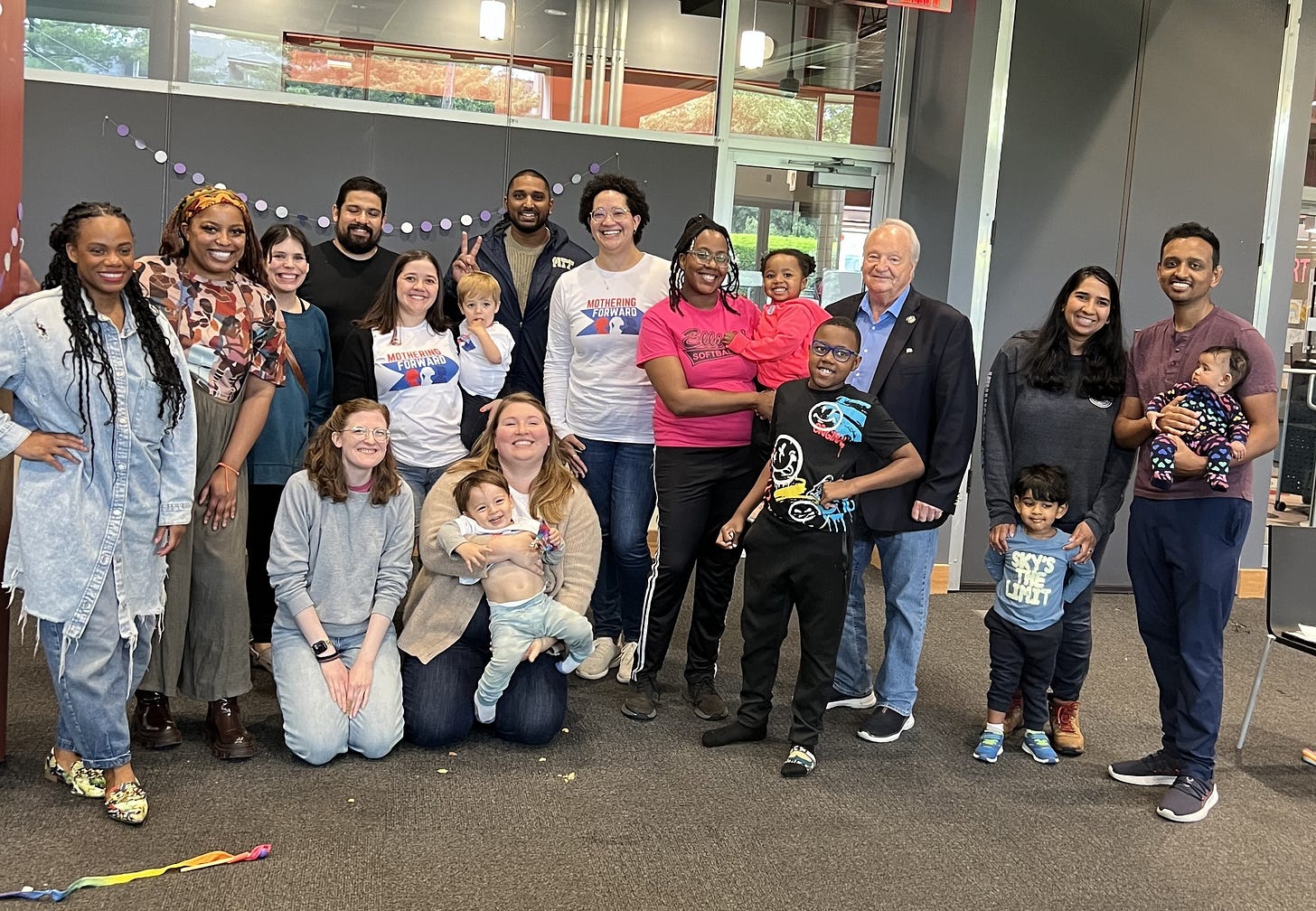Member-Driven Organizing is Making a Comeback
The new organization Mother Forward has a lot to teach about about creating organizations truly owned by the members.
I’m on the phone with Brigid Flaherty, an organizer with Mother Forward, a new working-class moms organization. She mentions that they hope to get a certain US Senator to attend their upcoming meeting. I share that I used to have a contact at that office and could dig it up. She responds, “thanks, but let’s see if we can get it.”
This simple choice made over and over develops member-driven organizations. Instead of taking me up on an assist, Brigid protected an opportunity for the people she is organizing to do the work, gain experience, and quite possibly get the Senator to attend the meeting on their own. This would feel a hell of a lot cooler than just having them magically show up. The instinct to pass on the easy assist is not common, but it is one we need more of if we are going to organize masses of working-class people.

There are times we need an assist. It’s one of the reasons we build a broad set of relationships, so we can get people with power – whether media, political, or cultural – to meet with us, move stuff with us, or attend our events. But Brigid’s instinct has me looking for when I am taking shortcuts to get an outcome instead of protecting the opportunity in each thing that needs to be done to develop leadership and ownership of the work.
For Mother Forward, this is more than an instinct; it is part of the culture. Before they were known as Mother Forward, the moms who launched this group took a trip to Washington DC. They had meetings with US Senators and Members of the House. The moms landed those meetings themselves. They wanted to have t-shirts for the trip, so the moms ordered iron-on letters and white t-shirts, pulled out the ironing board and made the shirts too. When they did land the organization’s name, through a process with members, no designer was hired to create the logo, one of the mom’s made it.
In our Working Class Campaigns Training, my co-trainer, Jenn Carrillo, runs a session about preparing for an issue-cutting meeting with members of the organization. She has a checklist of a couple dozen things that need to happen – everything from reserving the meeting hall, to getting agendas printed, to someone chairing the meeting itself. Jenn then explains that everything on this list is something that members could do.
Every time she says this, one of the trainees confesses that they are doing all or nearly all of these things themself. Then the rest of the trainee’s nod in acknowledgement. They too didn’t realize they could be asking people to take on parts of the work. No wonder they feel the need to profusely thank people for showing up, it’s not the community’s meeting, it’s the organizer’s meeting.
Mother Forward does not have this problem. The organization is engaging thousands of people across 15 states. They have three staff people, all organizers.
The best example of how being a member-owned organization has built more power is their ability to get media. The moms in Mother Forward have gotten over 30 media hits, ranging from USA Today and NBC News, to the state paper of record, to local television and print. Nearly every piece was landed by the moms themselves.
When one mom had an idea for an op-ed in the Columbus Dispatch, the most read newspaper in Ohio, she wrote a draft, sent it to staff for feedback, then instead of the staff saying they’d send it in for her, or hand it off to a comms person, the mom pitched to the Dispatch themselves. It ran a couple weeks later. I’ve worked for organizations that had an entire communications department that never came close to landing this level of media.
One of the critiques of community organizing has been whether it can scale. It can and has many times. If you look at the organizations that have done that, whether in a city, state, or nationwide, it’s been organizations that truly belong to the members, and members do a ton of work to move things forward.
The role of the organizer is to create an arena for people to develop as individuals and a group, to teach and model the fundamentals, and help the group land direction and strategy. It is not the organizer’s role to carry most of the work. It is sharing the work, preparing people to take action, and creating space to digest what happened.
Something is broken if the people we are organizing refer to the organization as “they” or “you all” instead of “we” and “us.” Clearly the organization does not feel like theirs, but when you are the one who made the t-shirts, designed the toolkit, or landed the big media hit, it does feel like yours, because it is.
Brigid’s instinct to see if they can land the Senator themselves, and Mother Forward’s member-driven culture, is a push for me, and i hope lots of us, to look for where we can be better at sharing the work and broadening who owns the organization.
We’ve got a new Season of To See Each Other coming out this fall. Subscribe here or wherever you listen to podcasts, and look for details in coming posts on this Substack.


Great article! I've organized within a few different environments. The member-driven approach is the one that builds power quickly AND for the long haul.
Good piece, George.